

ASupertramp
-
Posts
63 -
Joined
-
Last visited
Content Type
Profiles
Forums
Events
Gallery
Blogs
Store
Posts posted by ASupertramp
-
-
Good afternoon!
I have a newly installed Webasto evo and have some teething issues.
It’s a closed, pressurised system.
First, the pressure release valve is dripping. Sometimes it’s a steady stream. What should the pressure be while the system is running? It gets up to about 2bars. The pressure is set to 1bar when cold.
Secondly, the unit doesn’t seem to reduce its output. I had it running for two hours yesterday, the radiators were too hot to touch but at no point did the unit seem to reduce, is it usually detectable when it drops the output?
Thanks in advance
-
Good afternoon,
I have a Beko washing machine on my narrowboat which has worked well for two years other than an issue with filling very slowly (or not at all).
I can hear the water trickling in through the detergent drawer. Eventually the machine would show the no water icon. I solved this by just filling with water bottles.
I then changed the sureflo pump and upgraded to a higher LPM (keeping the same pressure) Jabsco.The machine now fills, but very slowly and the pump pulses throughout filling, at no point does it run continuously, almost as though the machine is struggling to pull the water.
All other water outlets run at good pressure and LPM.
Any theories?
-
It took 4.5L to take it just under the max mark on the dipstick.
I ran it for a little bit longer and the tapping settled down at 1000RPM and returned occasionally when increasing the revs as per the next video:
I’ve tried to localise the sound and I think it’s front left but it’s very difficult to tell.
-
Topped up with oil and initially had plumes of white smoke from the exhaust (unusual for my engine) which settled after a few minutes however I’m I’m getting this tapping sound with occasional puffs of white smoke. Oil pressure looks ok but I haven’t run it for very long…
-
18 minutes ago, Tony Brooks said:
FWIW I think I have seen a Calcutt van around the Hatton Flight, as it's a 1.8 it might be worth giving them a ring.
Ironically I’m on the way to them for an engine service but didn’t think to ring them for mobile repairs, will give them a bell. -
Thanks all. Not in a position to be able to sort it myself so I’ll try Swallow and Knowle Hall Wharf.
I vaguely remember this happening before and it was one of the side gaskets.
-
Good evening,
Does anyone have any recommendations for a mobile mechanic in the Midlands. I’ve broken down just south of Kingswood Junction.
BMC 1.8, lost oil pressure and started smoking from oil filler. I shut the engine off immediately. Dipstick shows empty and my bilge is full.
Hard to get a sense of who is good online so any recommendations would be greatly appreciated.
Thank you!
-
I’ve cleaned the pre pump filter. Water seems to be coming in well from the tank.
I may be wrong and it isn’t the pump, and the problem is somewhere between the pump, switch and accumulator but figured at the very least an increase from 11LPM to 15 would help.-
 1
1
-
-
Thanks both. If keeping the switch how do I know where to set the pressure to?
-
The water pressure on the boat has been steadily decreasing over the last year. A 5L bottle fills in 2 minutes using the kitchen cold tap. The washing machine will shut off before filling as it isn’t detecting water (I can hear it trickling in). Shower is OK but bath taps are a trickle.
The water pump is also starting to make a very loud groaning noise so in preparation I’ve ordered the Jabsco Par Max HD 4'. I ordered the 25psi, 15lpm version (I assume that’s correct?)
My current setup is a sureflo 11.3lpm with a pumptron switch and a 2L accumulator.
I’ve tried to adjust pressures on the switch and accumulator but it hasn’t altered the flow coming out of the taps (hence the pump upgrade).
Hot water is a 95L calorifier.
Picture of the setup attached (has been like this since I bought the boat).
Presumably I can get rid of the pressure switch with the new pump?
Any other glaring issues with just swapping out the pump?
Thank you!
-
Wondering if anyone has any ideas - I have a Beko washing machine plumbed into the cold supply, has been working perfectly for six months and then a few weeks ago a weird fill issue started:
When I turn it on, the washing machine starts drawing water, the expansion tank level drops and the pump kicks in, however, what seems to happen is the pump only runs until the tank is full again then cuts off. The washing machine continues to pull water but at a trickle until the tank is empty again, pump kicks in, fills tank, cuts off.
Previously I would just turn it on and it would fill without issue.
Taps and shower are all fine.
Filling the washing machine drawer with a bottle of water also works but means having to stand next to the machine and wait to hear for it trying to draw water, which is a faff.
Any ideas? I’ve tried repressuring the expansion tank to no avail and given the taps all work, feels like a washing machine issue.
Thanks!
-
Thank you both, so nothing catastrophic which is reassuring.
I’ve just bled the skin tank, lots of air in there and I ran the engine for a couple of hours, nothing major though a steady stream of steam emanating from the front of the engine. I’ll try and have a look at the water pump (thank you Tony) though it sits mighty close to the bulkhead.
Glad to know the oil leak is something obvious, I was worried it was related to the overheating and thought I’d cracked something.
I ran the engine with the coolant filler cap off just to see what was going on, how ‘bubbly’ should that be? I wonder if when I connected the calorifier up, I introduced air into the system.
-
Good evening!
Hoping to gain some advice. I’ve got a BMC 1.8 that overheated and cut out, billows of steam in the engine bay and burnt paint. Checked the coolant, couldn’t see any (despite virtually full a week or so earlier). Bilge always has water in so hard to tell where the coolant went.
After the engine cooled down, the following day I topped up the coolant and it’s been reasonably fine since however I’ve been keeping a close eye on it and can see steam coming out of the front of the engine (near the alternator) shortly after starting it up. Coolant also seems to be dropping again but can’t see where it’s leaking from.
Secondly, while looking for coolant leaks I spotted an oil leak coming from the side of the engine next to the air filter. When running it streams out and then when I shut the engine down I can hear a splash of oil dropping into the bilge. No idea if this is connected or incidental finding as prior to the engine service a few weeks ago, I’ve never had a problem with oil levels.
Engine is skin tank cooled and has a calorifier which gets hot.
Pictures and videos attached.
Any help would be greatly appreciated.
-
11 minutes ago, Puffling said:
Looking very nice, though.
Just out of interest, did the courier turn up at the time they advised?
I'm also getting three panels from Bimble later this week ⚡
I received a phone call when I ordered asking if I could take delivery today, then an email last night with confirmation that they would be out for delivery today with a three hour time slot. This morning a text from the delivery man saying he would ring when within 20 mins and to text him if needed. They turned up bang on time and carried the panels to the boat for me.
Can’t fault them.
While I’m at it, Alpha Batteries have been excellent after I ordered the wrong MPPT, refunded, changed and new one sent out within a day.
-
-
20 hours ago, LadyG said:
I think the bracket angling business was developed when panels were really expensive, personally I'd just keep it simple. minimal drilling,
People have engineered fancy designs, but in the end, it makes little difference unless you can angle your panels to the sun, turning continuously., And of course they would take off in stormy weather if they were perfect in that regard.
There are some figures floating around showing the increase when tilting, particularly in winter but you’re correct in that it would then require tilting throughout the day, which may not be practical for me as I’ll be at work.
Does this look like the best way to wire the 230v side? I wasn’t sure whether to put the RCD before or after the inverter but with wanting to isolate the immersion from the inverter side, this seems to make sense? Switch not required as the victron auto switches between shore power and inverter.
-
2 minutes ago, blackrose said:
How do all those loose cables flapping around pass any BSS inspection? Shouldn't they be clipped to a bulkhead, etc, not just cable tied in a big bunch and left loose?
Absolutely no clue how it passed, hence my now 2 year effort to rebuild, finishing with the engine room electrics! -
5 minutes ago, Tony Brooks said:
Please will you give me a link to the Cyrix unit. As far as I can see they are just voltage sensitive relays so would just link two batteries. Yours seem to be linking a number of charge sources.
Do you mean the box in the middle? It’s a Lynx Power in, effectively just a bus bar with fuses…
-
-
20 hours ago, Tony Brooks said:
As long as you ignore the % charged and use tail current to know when the batteries are fully charged they are probably all as accurate as each other. Some are easier to read than others.
4 hours ago, Sea Dog said:Agree - although he should take into account the maximum current capacity of the shunt.
Noted, thank you. Shunt is 500amps.
Victron Multiplus II 3000 ordered, additional cabling ordered. Picked up the ply today so that I can start laying out the board on Monday.
-
Solar panels are arriving on Tuesday. The rest of the equipment on Monday. Just need to size the correct cabling and order.
Any thoughts of BMV’s? I’m aware they can’t be taken as gospel.
-
3 hours ago, Alan de Enfield said:
Also consider which panels you buy - I have 120v panels (many are just 19v, or 30 volt) this means that (in theory) for every amp coming out of the panel I get 10 amps going into the batteries - In reality due to losses, and charging at 14+ volts, and not always having enough Sun to make 120v, I usually get 7x or 8x rather than 10x.
If you use (say) 19v panels you get roughly 1.5x the panel current going into your batteries.
You will be gald of MPPT controlers at each end of the season' as test suggest that you actually get 30%more output than with PWM controllers, so in October - you may get 4 amps instead of 3 amps
Here are the panel specs:
Watts 400 Maximum Power Voltage - Vmpp(V) 41 Maximum Power Current - Impp(A) 9.76 Open Circuit Voltage - Voc(V) 49.5 Short Circuit Current - Isc (A) 10.12 Panel Efficiency (%) 21.3 Height (mm) 1646 Width (mm) 1140 Thickness (mm) 30 Weight (KG) 19 Cell Type Mono Percium So 41v?
Just now, Alan de Enfield said:O' dear I spy Twin and earth grey cable .
THATS A HUGE NO NO for boat wiring.Hopefully you know that and its not some thing that you installed.
If you are doing the rewiring yourself then make sure you use cables and installation practices to ISO 13297:2020 which covers 'small craft wiring'.
The boat was full of grey twin and earth when I bought it, couldn't work out what was 12v and what was 230v, all been ripped out since. I think that's probably the last remaining remnant.
That's the plan and is why the solar installation has expanded somewhat to include rewiring the batteries, shore power etc as I'm fairly certain it's all on the cusp of being unsafe.
-
Now that the MPPT issue has been cleared up, I've had a look at my space for mounting everything, seems like it should be enough. I'll put a piece of ply over the tongue and groove so that there is a little more depth to screw in to.


-
1 hour ago, Tony Brooks said:
Agreed, but the OP showed no signs that he had even considered series connection. All I am suggesting is that he does a bit of research about it.
I had considered series but discounted it for the previously mentioned concern regarding shading.
As a happy compromise, it looks like a 100/50 to run 2x400w and a 100/30 for the other panel seems like a nice setup, ticking the cost box and adding in some redundancy.


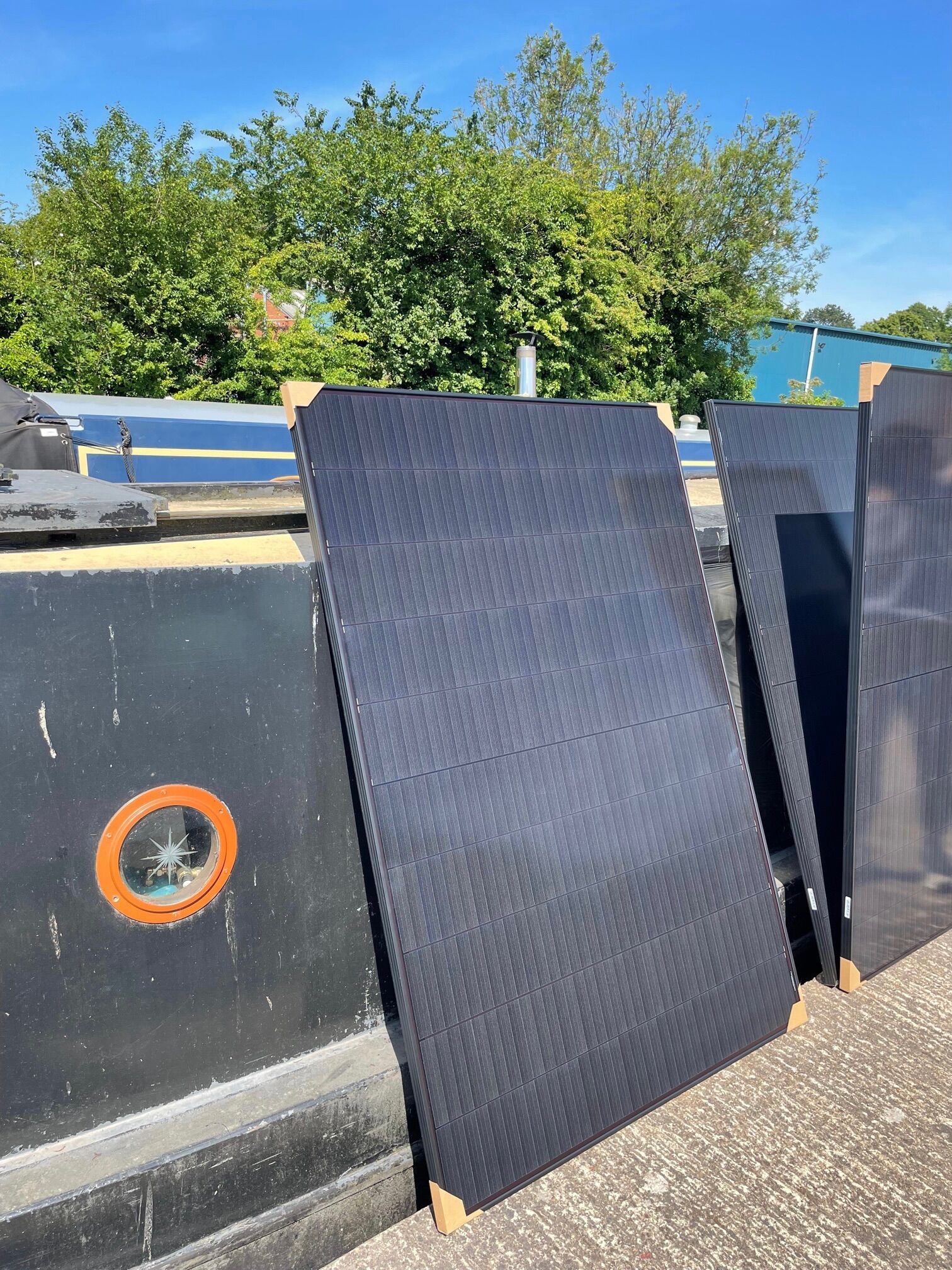
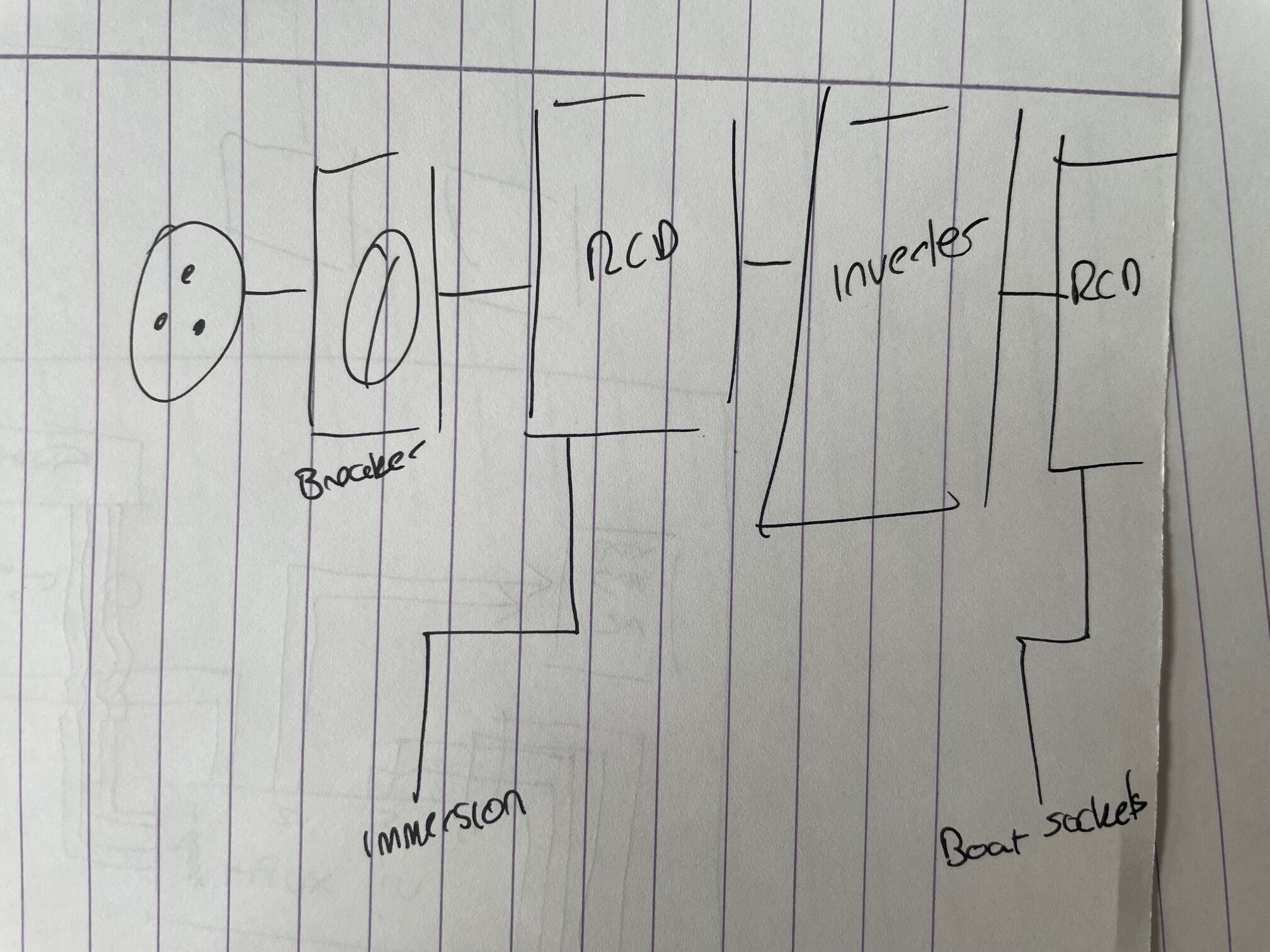
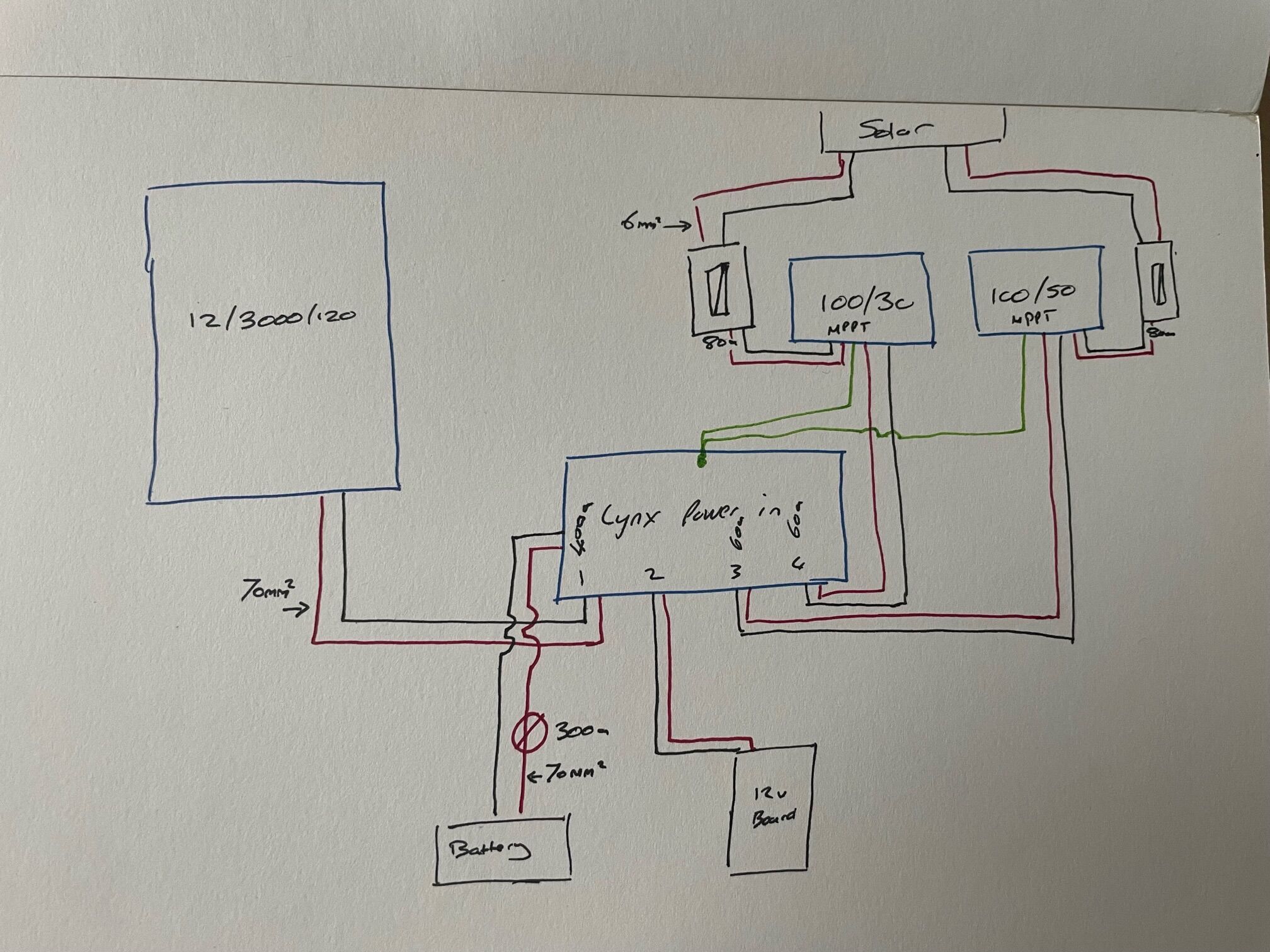
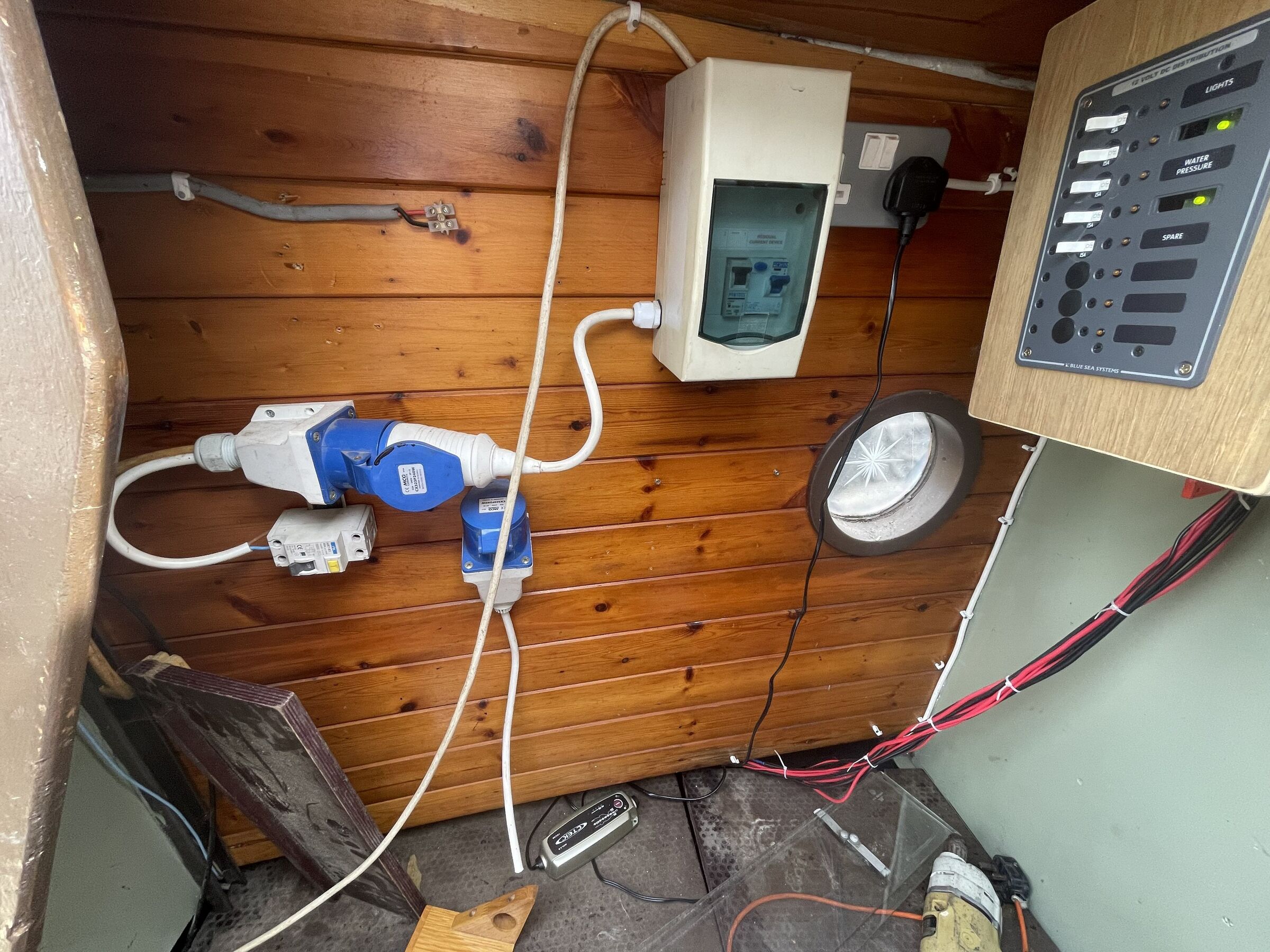
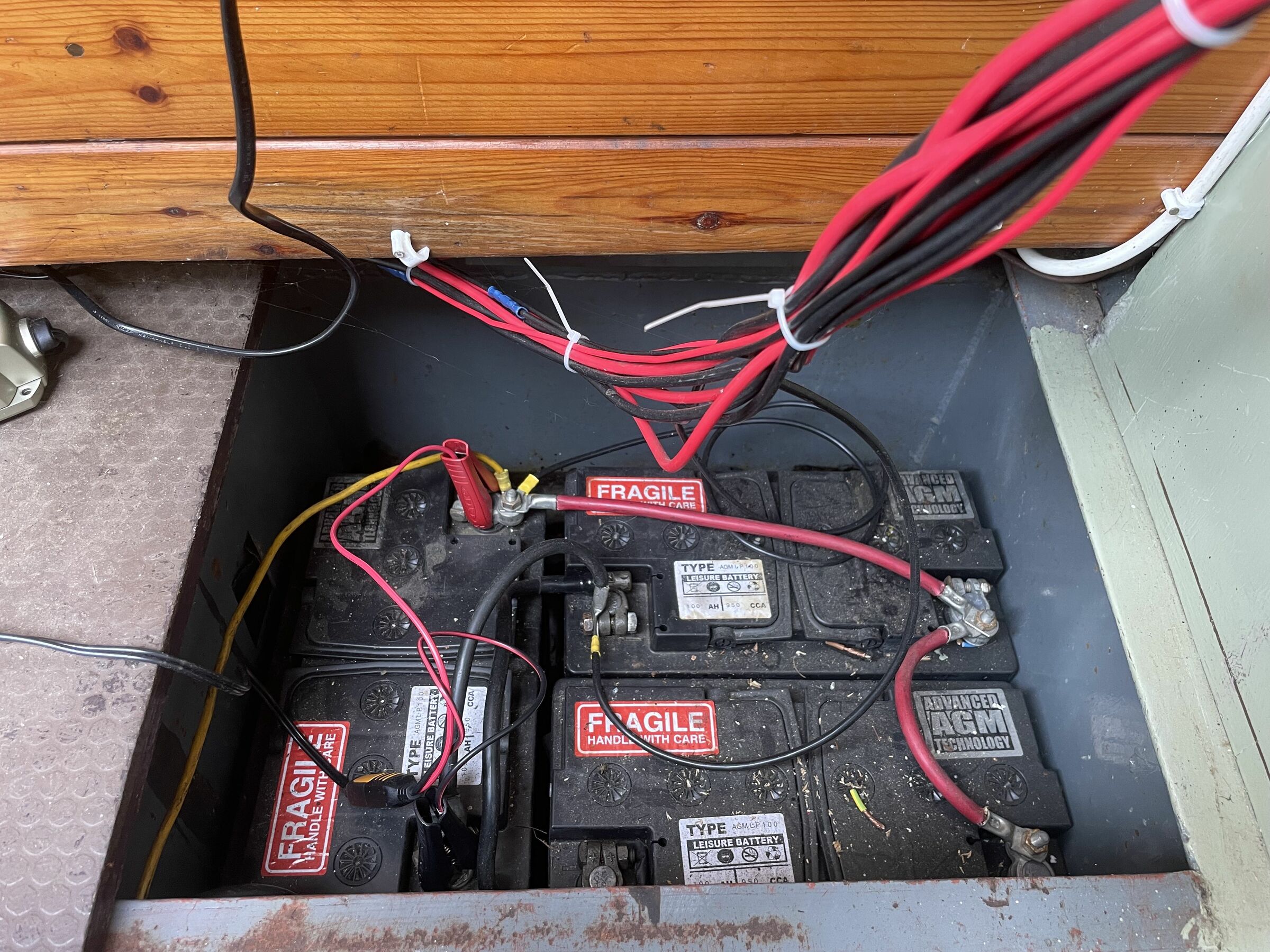
New Webasto issues
in Boat Building & Maintenance
Posted
Thanks for the replies.
PRV was installed with the Webasto unit and is leaking out antifreeze so definitely not part of the domestic system.
I’ve attached some pictures. Unit is running now and all the rads are very hot, pressure has gone from 1 to 2 bar again and sits at that. PRV doesn’t seem to be leaking now but I did fiddle with it.
The pressure sensor and expansion tank.